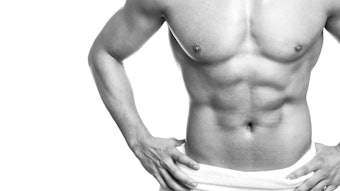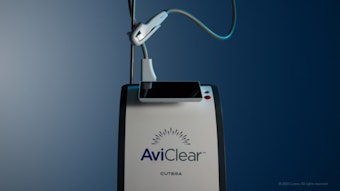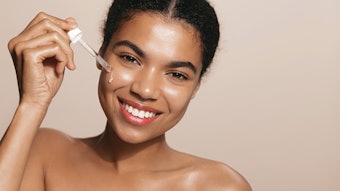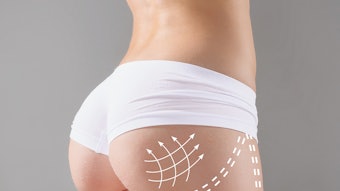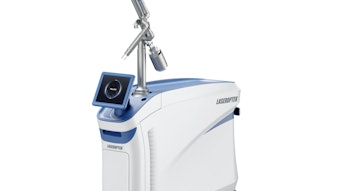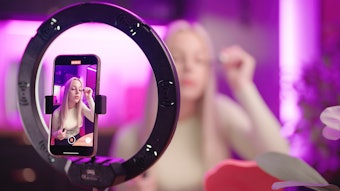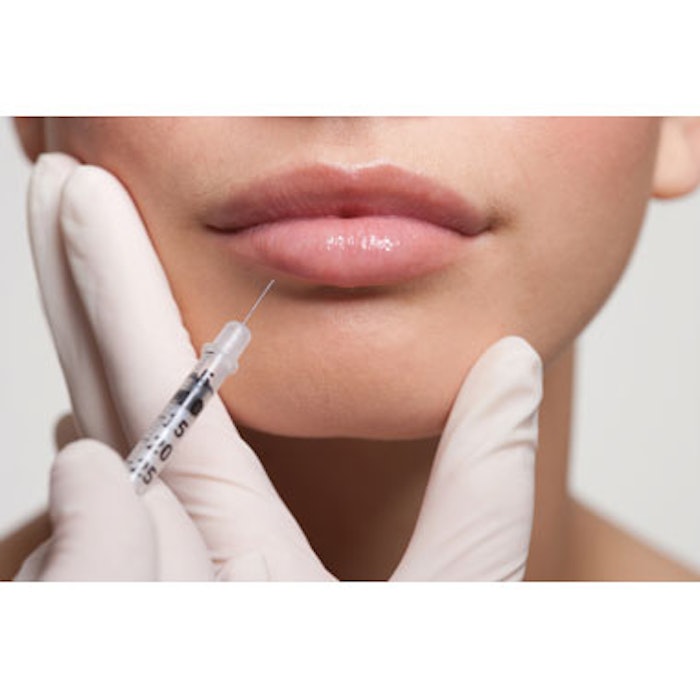
Lips are one of the key features of the face and the main feature of the lower third. Since ancient times women have used different substances and techniques to make lips stand out, from face painting to lipstick, and lip enhancement continues to trend today.
Both female and male patients want to improve fullness and/or definition, and hyaluronic acid (HA) filler is the right tool in the practitioner’s armamentarium to achieve these outcomes. We all know HA’s general properties, which make it a valuable tool, but one also must take into consideration rheology of the particular product to be used. Regarding lips, there are products that can be used to generate deep hydration without volumization, like low G’ fillers. In the scenario where volume is one of the objectives, intermediate G’ fillers should be used. Companies have developed several lip-specific fillers. The majority of these products generate volume and some trap water thoroughly for deep hydration as well.
Anatomy and Proportion
When injecting in the lips, understanding lip anatomy is important, and understanding the vascular compartments is mandatory. Surface anatomy landmarks are essential to deliver a safe treatment as well as a wonderful outcome and patient experience. Classical canonical beauty standards state that on frontal view, the ideal upper lip-to-lower lip ratio is 1:1.6. The vertical height of the upper lip should be less than that of the lower lip. On lateral view, if a straight line is drawn from the subnasion to the pogonion, the upper lip should project 3.5mm anterior to the line and the lower lip 2.2mm; the upper lip should project slightly more than the lower lip, again about 1.6:1. However, several studies have not found a relationship between facial attractiveness and the golden ratio. (Holland E. Marquardt’s phi mask: pitfalls of relying on fashion models and the golden ratio to describe a beautiful face. Aesthet Plast Surg. 2008;32:200-8.) It is also important to note that African Americans genetically have greater lip volume overall.
After obtaining a patient’s medical history, the first step for a successful treatment is to listen to the patient’s desires and concerns, then explain classical definitions of beauty and ratios and finally, current cultural trends. We should always ensure natural results!
Patient Selection
As with any other aesthetic procedure, patient selection is important. There are several studies regarding ideal proportions across different ethnicities, so the same procedure will not benefit every patient. The ideal lip is unique to every face.
Elderly patients often have a less exposed vermillion, a relative loss of vermillion bulk and philtral excess in the upper lip, while in younger patients, lack of volume in both lips is usually the main concern.
When planning your lip enhancement, look at the face as a whole. “Big eyes, fuller lips” is the general rule, as orbital size should correspond with the size of the lips. Also discuss patient desires and treatment goals.
Always look at the patient’s teeth, which support the lips. Absent teeth or uneven teeth may jeopardize the treatment you are about to perform. Refer the patient to a dentist when required.
Young female patients often request augmentation of the upper lip alone, without considering the balance between the upper and lower lips. So I counsel them on the outcome.
Contraindications for lip enhancement with HA fillers include:
- Autoimmune diseases
- Bleeding disorders
- Hypersensitivity to one of the components in the product preparation
- Inflammation or infection at or near the treatment site
- Pregnancy or breastfeeding
- For products containing lidocaine: Be aware of patients with known hypersensitivity to lidocaine and/or amide local anaesthetic agents
Relative contraindications include recent use of aspirin, nonsteroidal anti-inflammatory drugs (NSAIDs) or herbal supplements known to affect coagulation and hemostasis.
Regarding herpes simplex virus infection, never perform treatments if there are active lesions. In patients at risk of herpetic reactivation (>3 reactivations per year), treatment with 400mg acyclovir three times per day for 10 days or 1g valacyclovir twice per day for seven days is recommended before any injection. I follow the same dosage if an outbreak occurs after the procedure. In cases of frequent recurrences and severe outbreaks, any procedures with HA fillers should be discouraged.
Patients with unknown filler materials injected before should not be treated, as the risk of inflammation and allergic reactions is increased.
Patient Prep
Before the procedure I suggest the following to every filler patient:
- Avoid blood thinning over-the-counter medications such as aspirin, ibuprofen and other NSAIDs one week prior to injections.
- Avoid supplements, including St. John’s Wort, ginkgo biloba, primrose oil, garlic, ginseng and vitamin E for one week prior to injections.
- Avoid topical products such as tretinoin (Retin-A), retinol, retinoids, glycolic acid or any “antiaging” topical products for two days prior to injection.
- Avoid waxing, bleaching, tweezing or hair removal cream on the area to be treated for two days prior.
- Do not drink alcoholic beverages 24 hours prior to treatment.
At the Aesthetics & Dermatology Institute (ADEI), I perform an exhaustive medical history, excluding any of the contraindications described above. We explain the risks of the procedure to patients, so they can give informed consent. If the patient agrees, baseline photographs are taken.
Anesthesia is mandatory, as lips are a particularly sensitive area. I regularly perform this procedure after application of a topical numbing cream. In selected cases, lidocaine 1 percent with 1:100,000 epinephrine is injected into different intraoral points: two points superiorly through the upper gingivolabial sulcus, above the canine teeth advancing the tip of the needle up the face of the maxilla; two points inferiorly through the lower gingivolabial sulcus, below canine teeth. About 0.5cc per point is enough to achieve anesthesia. Sometimes lip movement is compromised; clinical evaluation should be meticulously done at this point. Conscientious asepsis practices are encouraged.
Injection Technique
After asepsis, I divide both the upper and the lower lip into symmetrical right and left sides by an imaginary vertical line through the center of the Cupid’s bow. I make four entry points using a 23-gauge needle. The entry points are located 3mm above the vermillion border of the upper lip and 3mm below the vermillion border of the lower lip, next to the labial commissure. Using a 25-gauge 38mm cannula, I inject the HA filler into a divided part of the lip through the entry point. The filler is gently administered submucosally using a fanning technique. Small boluses of 0.1ml to 0.4ml are deposited at the injection area. The same technique is applied to the other three parts of the lips.
To enhance the vermillion border and Cupid’s bow, I use a 30-gauge 25mm needle, injecting immediately below these areas into the subdermal plane, applying 0.1-0.2 aliquots. This creates a subtle frame for the lips, enhancing their shape.
Subsequently, I carefully inspect the lips and perform a gentle massage, using a petrolatum-based ointment. At this point, no nodules or lumps should be detected.
This procedure should take 20 to 30 minutes. Remember to always inject the filler slowly to avoid excess bruising and swelling, overfilling and to minimize the risk of occlusion.
Adverse Events
The most common adverse events are bleeding, erythema and edema. These are temporary. I tell my patients to apply ice packs to the area for up to 24 hours postprocedure to reduce these concerns.
In the case of a herpes outbreak, treatment (as described above) is recommended with 400mg acyclovir three times per day for 10 days or 1g valacyclovir twice per day for seven days.
Severe and prolonged swelling or bruising lasting one week to 10 days may also occur. Lips are prone to swelling, thus the technique for application should be gentle and slow. I recommend ice packs. Antihistamines may also help.
Infections following lip fillers are rare. Be aware that a transmucosal approach may pose a risk for infections by oral flora. Start empiric treatment early if an infection is suspected. Cephalosporins are a good choice to treat perioral infections.
Lumps and nodules are not common when you massage after injecting. If lumps are detected at follow-up, one may try to vigorously massage the area. If lumps persist, use hyaluronidase.
Vascular events typically occur around the corners when performing lip fillers. To avoid these: Avoid going deeper than 4mm into the lips (generally, arteries are located in the submucosal layer); inject slowly; and, if using needles, always aspirate. Every practitioner should have hyaluronidase in the office. If a vascular event is suspected—sudden pain, blanching, mottled skin appearance—immediately inject hyaluronidase to remove the filler.
If the patient has lip asymmetry at follow-up, it may be necessary to reinject with more filler to correct the asymmetry. You can reduce this risk by focusing on the quantities injected in each point, noting baseline asymmetries and planning your treatment to correct them carefully.
Post-Treatment Care
Patients regularly develop several degrees of swelling, bruising and tenderness. As mentioned above, I suggest the application of ice packs up to 24 hours postprocedure. The swelling usually resolves within 72 hours. Bruising takes up to six days to resolve.
I advise patients to avoid smoking, hot showers, saunas, hot foods and beverages, and heavy exercise for the first 24 hours after filler injection. Makeup also should be avoided for up to 24 hours. If the patient needs to wear makeup, it can be used six hours postprocedure.
Counsel patients that almost 50 percent of the initial volume will fade away. Always arrange a follow-up appointment at least seven days postprocedure to ensure healthy healing and review outcomes and satisfaction.
In cases where there are multiple asymmetries to correct, up to two procedures may be required. I never use two cc syringes in the same treatment, as I’ve encountered greater swelling and discomfort in these cases. If two syringes are required, I perform the injections at different appointments.
Patient satisfaction for lip enhancement with HA filler is high, but treatment is most successful when treatment goals and patient desires are aligned.
Patients often come into my practice wanting to add more volume after being treated elsewhere. I try to steer them toward a more natural look, using simple tools such as a handheld mirror. Generally patients agree, avoiding a third or even fourth filler syringe.
Satisfaction level is up to 90 percent in the first three to six months after the procedure, gradually decreasing over time as the filler degrades.
Miguel Aristizabal, MD, specializes in aesthetic medicine and is the CEO of the Aesthetics & Dermatology Institute (ADEI).
Image copyright iStock.com/Robert Daly
